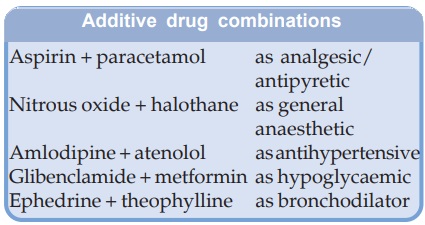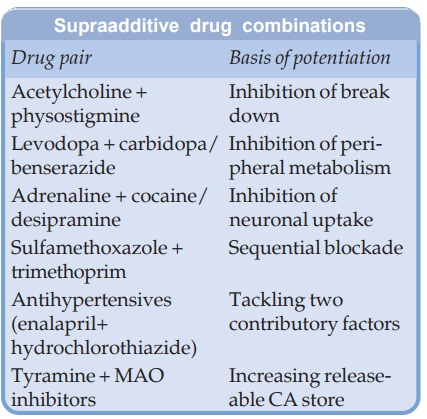Synergism
| Home | | Pharmacology |Chapter: Essential pharmacology : Pharmacodynamics Mechanism Of Drug Action; Receptor Pharmacology
When the action of one drug is facilitated or increased by the other, they are said to be synergistic. In a synergistic pair, both the drugs can have action in the same direction or given alone one may be inactive but still enhance the action of the other when given together.
SYNERGISM
(Greek: Syn—together; ergon—work)
When the action of one drug is facilitated or increased by the other, they are said to be synergistic. In a synergistic pair, both the drugs can have action in the same direction or given alone one may be inactive but still enhance the action of the other when given together. Synergism can be:
a. Additive
The effect of the two drugs is in the same direction and simply adds up:
effect of drugs A + B = effect of drug A + effect of drug B

Side effects of the components of an additive pair may be different—do not add up. Thus, the combination is better tolerated than higher dose of one component.
(b) Supraadditive (Potentiation)
The effect of combination is greater than the individual effects of the components:
effect of drug A + B > effect of drug A + effect of drug B
This is always the case when one component is inactive as such.

Related Topics
